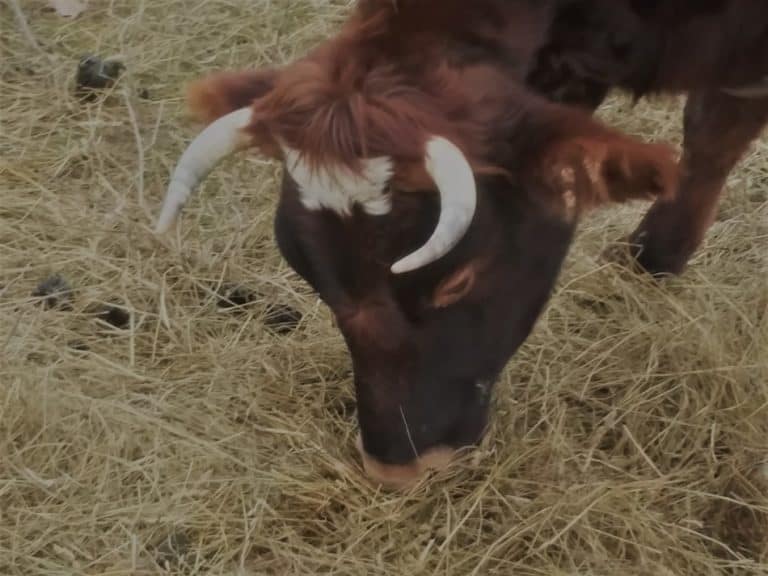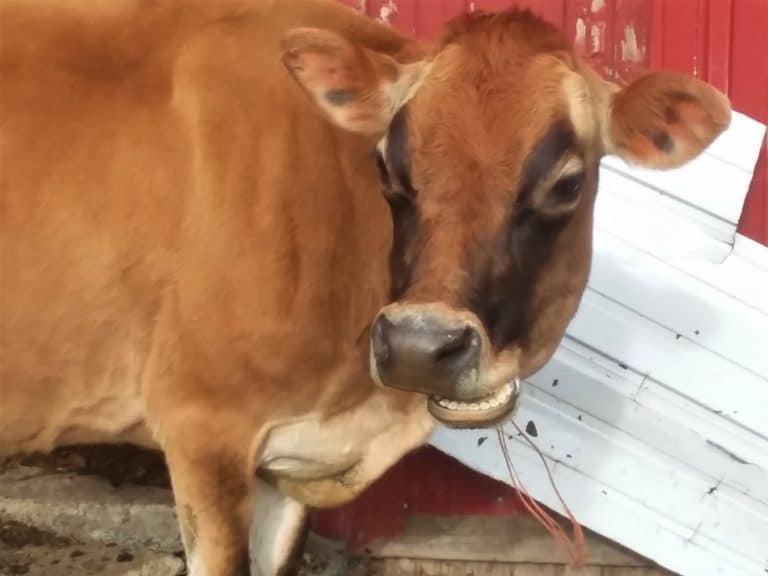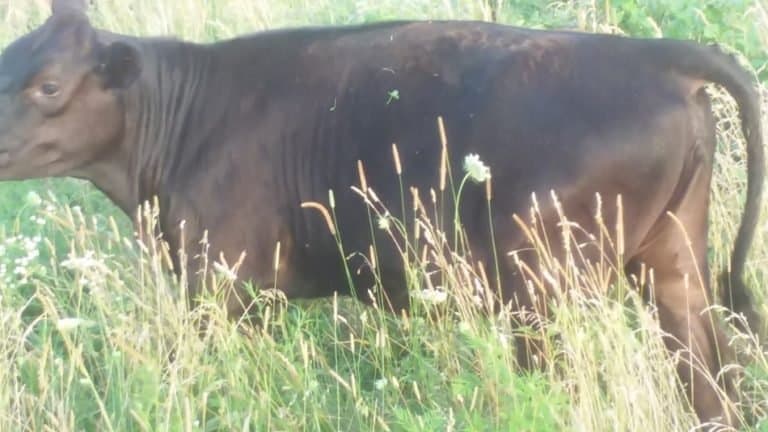Zero Grazing: What Is It And Will It Work For You?
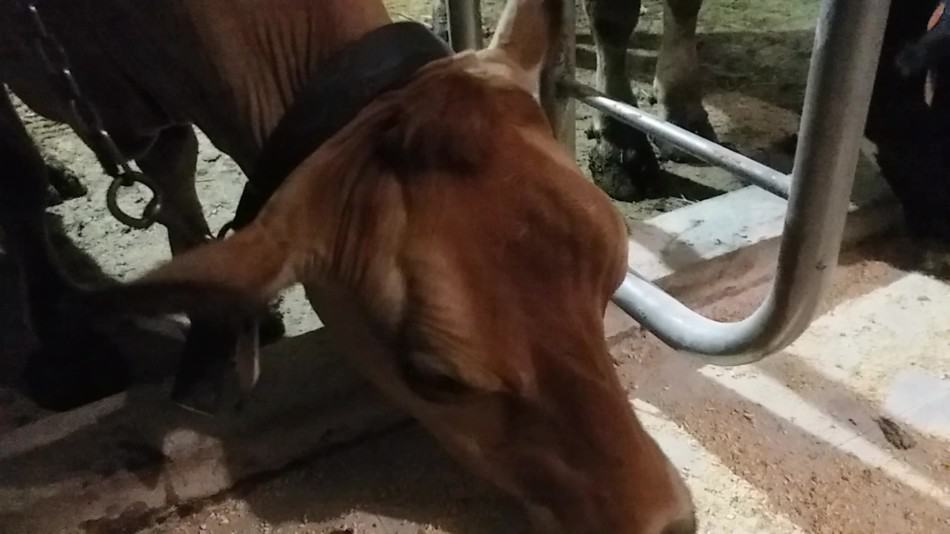
While looking around online for farming and grazing information, ideas and sometimes a little inspiration and found an intriguing term: Zero Grazing.
What on earth is zero grazing, who is using it and why?
Zero grazing is the practice of using machinery to take freshly cut forage to ruminants housed in a barn.
Zero grazing means you are giving the livestock, usually cattle, freshly harvested, green forages like grass, daily.
Zero grazing uses machinery to bring the forage to the cattle in the barn instead of rotating the cattle through the areas where the forage is grown.
The grass must be cut and fed fresh every day to keep it at grazing quality for the cattle. Cutting once every few days will cause the grass to start to breakdown and spoil.
There is a similar option to zero grazing currently used by some farmers in the U.S. called green chop.
Just like zero grazing, green chop is cut in the field and brought to the cattle to eat fresh. Usually, green chop is fed in addition to pasture and fed on a wagon the cattle can eat from.
For our area, green chop seems to be falling out of favor and haylage or silage are being harvested and fed as needed, instead of the daily fresh harvest.
Want more details on grazing cattle? Check out my article Grazing Cattle: Using Grass To Feed Your Herd.
Zero grazing: a limited land option
The biggest reason for using zero grazing is you can get fresh forage to your cattle that was grown in a field too far away for the cattle to walk to.
An example:
When we milked cattle at the farm we rented, there was a pasture and hay field included with the rent.
The pasture was right by the barn, but the hay field was a few miles away across a two lane highway!
We harvested this field fresh as green chop and brought it back over to the cows on the wagon.
We prefer to graze, it’s makes more sense to us than running around on a tractor.
With the field being inaccessible for our cattle, green chop was the best answer for getting fresh forage to the milkers when they needed it.
It is common for farmers to have land rented that is not close to the home farm. An answer to this quandry is making hay of course!
Sometimes you and your cattle will be better served with fresh grass, so if the cattle can’t go to the grass you bring the grass to the cattle.
Zero grazing needs equipment
While you could cut grass and other forages for your animals by hand, this will be an incredible amount of work.
To feed more than a few small calves, you are going to want to have some machinery to get the forage to your cattle.
The basics would be a tractor, a mower and a wagon.
I say mower (not chopper) because you are wanting the grass to be cut in long full stalk lengths not chopped up into little pieces like your lawn mower would.
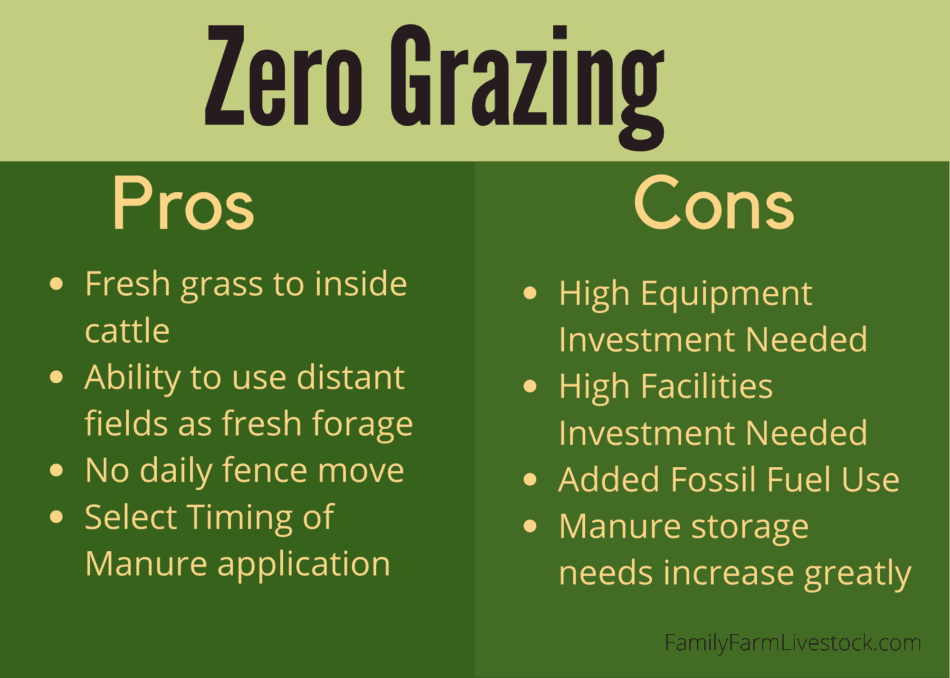
Zero grazing facility needs
You will need year round tractor access
In addition to the machinery you will also need a way to get that machinery at least the tractor and the wagon in front of the cows so they can eat the grass.
Usually this means a concrete alleyway in front of a row of headlocks that the cattle will eat through.
Manure will need to be stored
It’s easy to see all of the grass here and get stuck on all of the forages you can get to your cattle.
Let’s not forget about the consequences of that forage eating, yep, we’re talking about manure.
Since you are taking all of the forage to the cattle, not taking the cattle to the forage, you are also going to have to deal with the entire year’s worth of manure.
There will need to be a place to keep the manure and a way to clean that storage area out.
When cows are out on pasture it’s easy to forget about all of the poo that they put back on the field for you.
Take away the pasture and you’ve just given yourself another job to do.
Here’s an article showing the prices and the reasons for a farmer to get into zero grazing Dairy Global-Still Zero Grazing After 17 Years.
This article is a few years old, but would give you a great idea of how and why to get started and has some great pictures.
Zero grazing not for small farmers
Now that we’ve looked into zero grazing and the system needed to support it, I would not consider this idea to be small farm appropriate.
It’s not that you can’t implement zero grazing, of course you can.
It requires quite a bit of money to be put into equipment and facilities that would be tough for most small farmers to justify as a wise business expense.
How is zero grazing different than a feedlot?
Zero grazing isn’t any different than a feedlot in function, but would be different in the feed the cattle eat (their ration).
In a feedlot. the cattle stay in one place and all of their feed is brought to them.
The normal feedlot ration would be very high in grain, since a high grain ration is the cheapest and quickest way to put weight on cattle.
Interested in learning more about what is a feedlot and if it is right for your farm? Read my article Feedlot or Pasture. This article has a small producer focus.
With zero grazing, the main focus of the ration is the fresh forage (not maximum grain intake).
I’m sure farmers using zero grazing can also feed their cattle grain, if grain feeding fits with their cattle raising plan and management, however the focus is on the forage.
And not just any forage, fresh forage.
“To feed over 800 head of cattle we harvest four loads of fresh grass per day and dispense the grass in the passages for the cattle. (Irish dairy farmer Roy Harpur speaking)
Dairy Global Still -Zero Grazing After 17 Years written by Chris McCullough
Conclusion
Zero grazing has some interesting aspects. To me, the stand out point is that fresh forage is hugely important to cattle productivity and health.
Actually, the Dairy Global article points out the huge growth in the popularity of Irish dairy products, specifically butter.
And what is Irish dairy farming known for? Grass based milk.
Something to think about, especially with the U.S. dairy industry and dairy products going down in popularity.
The aspect of zero grazing that doesn’t make sense to me is why not just graze the field with the cattle?
I can see needing to be able to harvest distant fields that the cattle can not be walked to, but anything close to the barn is more easily grazed.
Even in poor field conditions the tractor is going to make ruts if the hooves are going to leave marks.
I have to admit to my bias toward grazing, but this is more than that.
Look at the money spent to make the facilities for all of the manure storage alone! Now add in all of the extra equipment. That’s quite a bit of cash.
Spend a fraction of that money on a grazing set up and wow, that would be an amazingly well run grazing dairy!
Overall, while zero grazing definitely has some interesting aspects, for the small farmer, or someone just getting started with cattle the expenses required to make a zero grazing system work are going to be too high.
